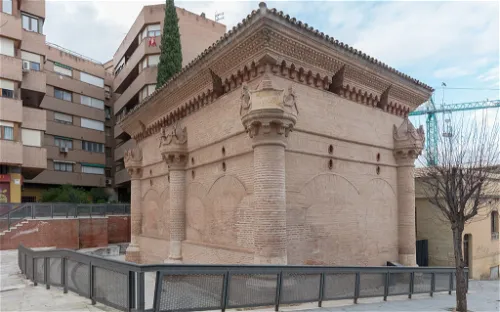Chapel of Luis de Lucena and its collection
The Chapel of Luis de Lucena, also known as Nuestra Señora de los Ángeles or de los Urbina, is a significant historical site located in the Spanish city of Guadalajara. It was constructed in the mid-16th century by the humanist Luis de Lucena and was initially connected to the Church of San Miguel until its demolition in 1887. Since then, the chapel has stood as an isolated building, rich in history and cultural significance.
Symbolism and Aesthetic Program of the Chapel
The Chapel of Luis de Lucena is known for its rich symbolism, evident in its constructive and decorative elements. The final aesthetic program of the chapel is a Mannerist license, reflecting the open dialectic of the time about the trace, shape, and dimensions of the primitive and disappeared Temple of Solomon. This unique aesthetic and symbolic richness adds to the cultural and historical value of the chapel.
Artistic Pieces Housed in the Chapel
The Chapel of Luis de Lucena is home to several significant art pieces. These include the plasterwork of the Orozco chapel, the recumbent sculptures of Juan Sánchez de Oznayo and his wife, and some fragments of the tombs of the counts of Tendilla. These pieces, each with their own historical and artistic value, contribute to the rich cultural heritage housed within the chapel.
History & Anthropology Art & Design Historic house Religion Religious building Renaissance art & Early modern art
#2 History & Anthropology in Guadalajara #2 Historic houses in Guadalajara #22 Art & Design in Castile-La Mancha #32 History & Anthropology in Castile-La Mancha #17 Historic houses in Castile-La Mancha #14 Religion museums in Castile-La Mancha #9 Religious buildings in Castile-La Mancha #9 Renaissance art & Early modern art museums in Castile-La Mancha #172 Religion museums in Spain #107 Religious buildings in Spain #86 Renaissance art & Early modern art museums in Spain

